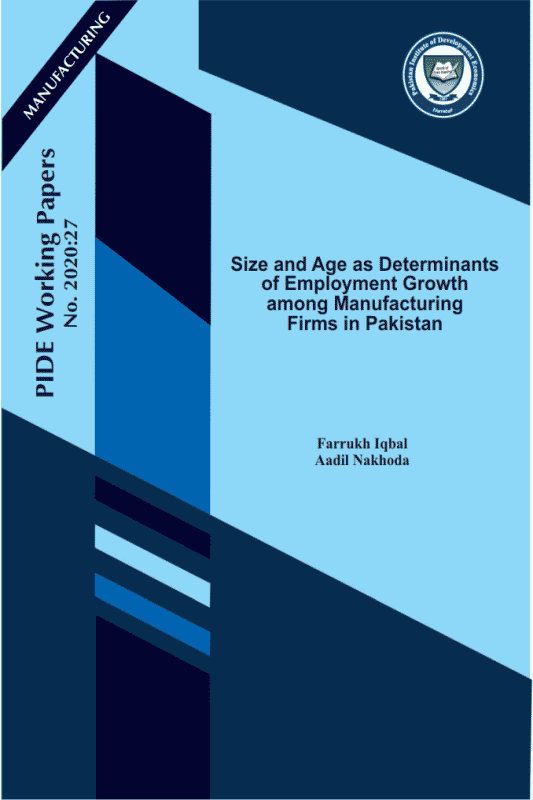Size and Age as Determinants of Employment Growth among Manufacturing Firms in Pakistan
Size-based industrial policy is usually justified in developing countries on the basis of positive externalities arising from an assumed inverse relationship between size and firm dynamism, whereby smaller firms generate jobs faster than larger firms and thus absorb more labour. Theoretically, such a profile could arise from the stylized lifecycle of the typical firm which starts small and grows on the basis of economies of scale until a point where such economies are fully exploited. A similar profile could also be generated by the rising age of the firm. In this case, the firm grows faster when young, driven by the effort, ideas and risk-taking of young owners and managers, but grows slower as they mature and become more risk averse and more cognizant of their firm’s capabilities. In recent decades, empirical support has been found for both size and age effects on employment growth in some developed and developing countries. For Pakistan, the joint effects of size and age on employment growth have not been studied at the national level, even though size-based industrial policies have long been applied and age-based policies are growing in popularity. We address this gap in this paper and report three key findings: (i) size is inversely related to employment growth among manufacturing firms in Pakistan; (ii) the effects appear to be concentrated among firms having 50 workers or less; and (iii) age is not a statistically significant determinant of employment growth when all manufacturing sub-sectors are considered in the aggregate.




